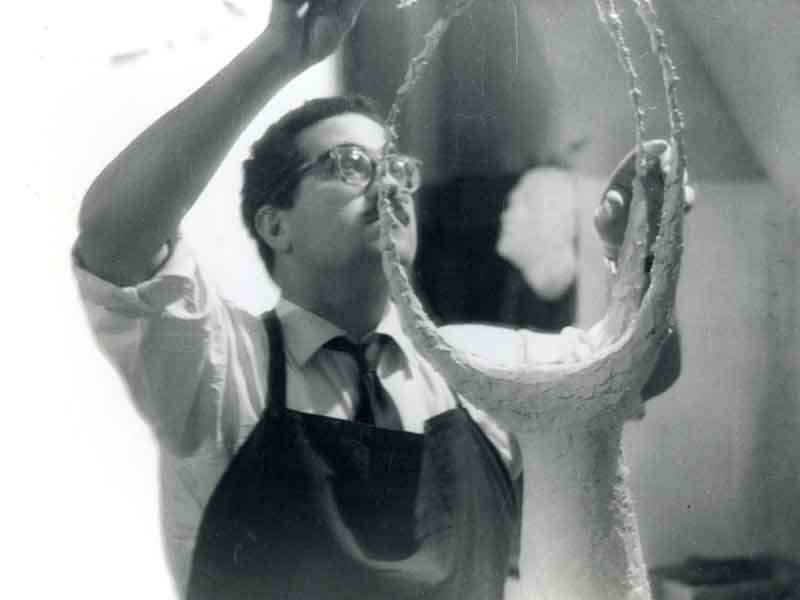Jorge Vieira archive

The archive of the sculptor Jorge Vieira (1922-1998) became part of the Art Library’s collection in 2021, through a donation by the sculptor Noémia Cruz, his widow. It is a diverse collection of documents that reflect the artist’s artistic and educational career.
The documentation includes printed material, such as books, catalogues, and exhibition leaflets, press cuttings and ephemera, and manuscripts, such as correspondence, sketches and drawings, as well as plaster and metal models of works. Their study will allow a better contextualisation of the sculptor’s career on the national and international artistic scene, since Jorge Vieira studied at the Slade School of Arts in London in the 1950s.
The Jorge Vieira archive is added to the archives of Alberto Carneiro, Fernando Calhau, Helena Almeida and David de Almeida, and the Art Library is consolidated as a benchmark institution for the study and understanding of Portuguese artistic production between the second half of the 20th century and the first decades of the present century.
To mark the donation to the Calouste Gulbenkian Foundation and to celebrate the centenary of the sculptor’s birth, the Art Library is showing – between 12 October and 14 November – some documents from the Jorge Vieira Archive and some works from the Centro de Arte Moderna (CAM) collection and is organising a round-table which will take place on 25 October at 6.30pm in Auditorium 3 of the Calouste Gulbenkian Foundation. Participating in this conversation are journalist Ana Sousa Dias, art historians Pedro Lapa and Leonor Oliveira and sculptor Rui Chafes.
Received his initial artistic training at the Escola Superior de Belas Artes in Lisbon, where he graduated in sculpture (1953), was considered by the art historian José Augusto França to be the most important Portuguese sculptor of the 1950s. During his apprenticeship he worked in the studios of the sculptors António Duarte, Francisco Franco, and António Rocha. While still a student he participated in the Exposições Gerais de Artes Plásticas (1947 and 1951), organised by the Movimento de Unidade Democrática in opposition to the official salons of the regime, and in 1953 he was the only Portuguese sculptor to be selected for the international competition for the monument to the "Unknwon Political Prisoner" promoted by the London Institute of Contemporary Arts. Between 1954 and 1955 he studied in London at the Slade School of Arts, where he was a pupil of Henry Moore. His travels throughout the 1950s not only allowed him to encounter the work of other artists/sculptors, but also marked his creative practice. He was awarded 2nd prize for Sculpture at the I Exposição de Artes Plásticas of the Calouste Gulbenkian Foundation (1957) and 1st prize at the Exposição de Artes Plásticas in 1961. His political stance of opposition to the Estado Novo led to various difficulties, and he was excluded from teaching at the Escola Superior de Belas Artes de Lisboa, where he only returned in 1981, having retired in 1992. Throughout his practice, drawing, collage and sculpture - in materials as diverse as terracotta and iron - constituted the body of Jorge Vieira's artistic work. His works in public spaces include the "Homem-sol" at Parque das Nações, inaugurated during Expo98 and the metal sculpture in Lisbon's Praça do Município.